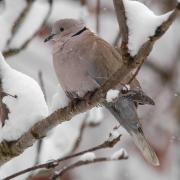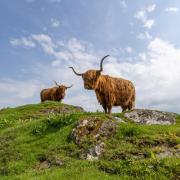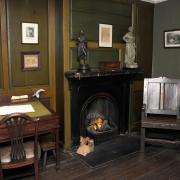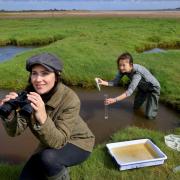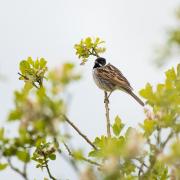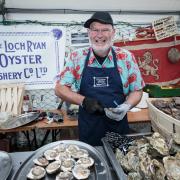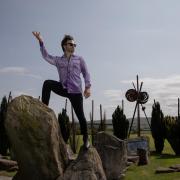On a fine summer’s morning in June, I can think of nowhere better to be than sitting looking out over a shimmering Solway, watching fulmars flying past.
Gliding on thermal updrafts, they make flight look easy, skimming past only a few metres away, while I sit perilously close to the cliff-edge, hoping to get a few pictures as they glide past on those distinctive stiff wings. I need to remember I can’t fly, and if I lean out too far, it’s a 150ft drop to the sea below!
On one occasion, after hours of watching fulmars, I remember catching a glimpse of movement to my left, in my peripheral vision. It was only when I took a closer look that I discovered it was a male adder which had appeared, seemingly from nowhere, and was settling down for a spot of sunbathing on a patch of dry ground warmed by the early morning sun, barely a metre from where I was.

I often find that chasing around looking for wildlife is not nearly as productive than just finding as good spot and just sitting still, keeping quiet, and letting the wildlife come to you. Checking back through my notebooks, on that particular morning I recorded four species of butterflies fly past, several species of seabird, along with some rather distant views of two harbour porpoise.
I have also seen dolphins from that same spot, just not on that day. These two species of cetaceans are fairly easy to tell apart: the porpoise are much smaller and give the appearance of a car tyre turning in the sea, as you seldom get much of a view of their head.
Dolphins, on the other hand, are considerably larger and tend to let their heads breach clear of the water. There are other differences, but these are the easiest ones if you are viewing from a distance.

Getting back to fulmars: if you get to see one of these mini albatrosses up close, they almost look deformed, given how far back on their body their feet are set, and the fact they are very clumsy on land. Having their feet positioned so far back on their body allows them to run along the sea surface to get airborne again if they land on the sea.
You should never see fulmars inland; they only really come to land to breed, and then it’s nearly always on a cliff that will allow them to drop off directly into a mid-air flight.
Grebes are another species which have their legs set back in their body, and they too never intentionally land on the ground, although I have picked up one or two over the years that had landed on wet roads thinking it was water.





